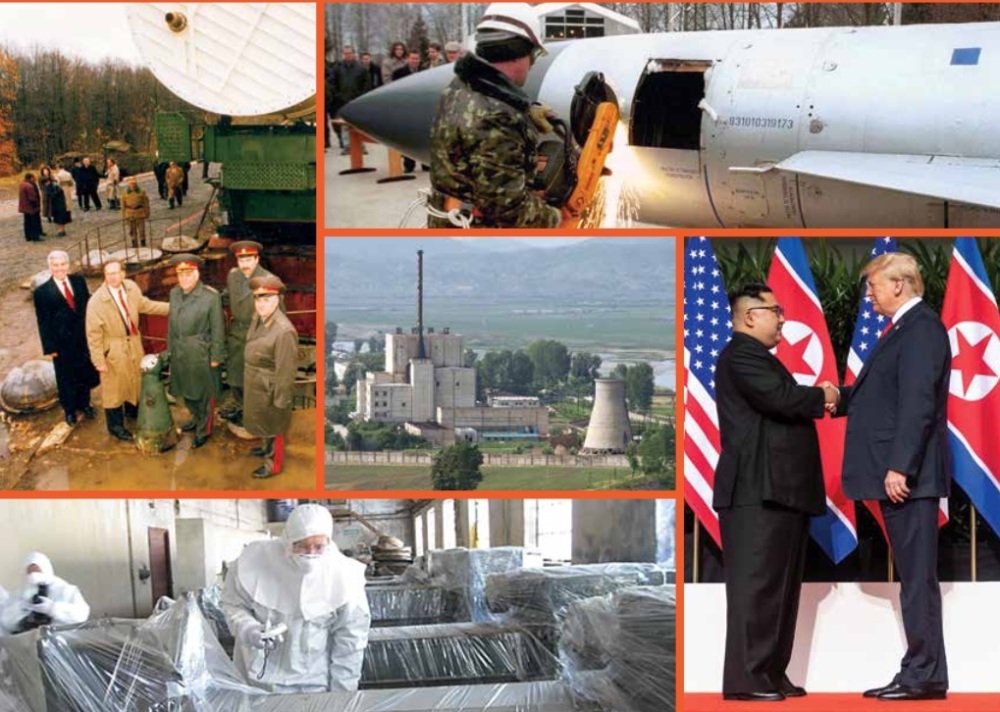
Kenley Butler
Research Associate, The James Martin Center for Nonproliferation Studies
Central Asia played an important role in the development of weapons of mass destruction (WMD) during the Soviet era. The region's vast reserves of uranium were tapped to produce fissile material—highly enriched uranium (HEU) and plutonium—for the Soviet Union's nuclear arsenal. Wide-open, isolated spaces were used to test nuclear, biological, chemical, and radiological weapons, as well as missiles.
In the early 1990s, the Central Asian states—Kazakhstan, Kyrgyzstan, Tajikistan, Turkmenistan, and Uzbekistan—became independent and faced the challenging task of dealing with the WMD legacy left by the Soviet military industrial complex. After a decade of internal policies supporting the nonproliferation and the non-use of WMD and with significant support from the rest of the world, the Central Asian states are free of nuclear weapons, have signed and ratified major international nonproliferation treaties, and are making strides to either eliminate or to properly safeguard WMD material that remains in the region. There is still work to be done, however, particularly to strengthen the region's export and border control systems.
Central Asia played a key role in the development of weapons of mass destruction (WMD) during the Soviet era. Uranium was extracted throughout the region and shipped to uranium enrichment facilities in other parts of the Soviet Union and later incorporated into nuclear weapons. Uranium for the Soviet Union's first atomic bomb was mined and milled at Vostokredmet in northern Tajikistan. Other large-scale uranium mining and milling facilities are located in Uzbekistan, Kyrgyzstan, and Kazakhstan.
The Soviets tested 456 nuclear devices as well as radiological weapons at the Semipalatinsk Test Site in Kazakhstan. The Soviet Union's largest field test site for biological weapons was on Vozrozhdeniye Island, now a peninsula, in the Aral Sea, where weapons armed with anthrax, plague, tularemia, and smallpox were tested. Chemical weapons were fabricated and tested in western Uzbekistan, near the city of Nukus. The world's largest biological weapons fabrication facility was constructed in Stepnogorsk, Kazakhstan to produce anthrax. Strategic missiles armed with 1,410 nuclear warheads were deployed throughout Kazakhstan. In addition, the region was home to six nuclear research reactors that ran on highly enriched uranium (HEU) fuel and a unique breeder reactor on the Caspian Sea that produced plutonium.
Soon after they became independent in the early 1990s, the five Central Asian states faced the task of creating policies and programs to deal with the WMD legacy left by the Soviet Union. Much of the funding for disarmament and nonproliferation activities came from the Cooperative Threat Reduction (CTR) program of the United States. The past decade has seen a series of success stories in the region.
Despite the tremendous strides made by the Central Asian states to secure WMD materials in the region, there are still concerns that existing materials could be vulnerable to theft or diversion. These concerns intensified after the events of September 11, 2001, in part due to the region's proximity to states with suspected ties to terrorist organizations as well as the presence of indigenous terrorist groups, such as the Islamic Movement of Uzbekistan.
Fissile material—HEU and plutonium—may be one target of those seeking to acquire WMD capabilities. The region's four operational nuclear research reactors and the shutdown breeder reactor in western Kazakhstan house fissile material. All these facilities, however, have received security upgrades in recent years. In addition, there are plans to transfer some of the excess fissile material out of the region or to more secure locations within the region. Examples of material that has been or will be transferred include the transfer of spent HEU fuel from a reactor in Uzbekistan to Russia and the proposed transfer of spent fuel from the Kazakhstani breeder reactor on the Caspian Sea to a more secure location in northeast Kazakhstan.
More worrisome than the threat posed by WMD materials in the region is the possibility that Central Asia could be used as a transit point for materials originating elsewhere. Central Asia is located between countries to the north with significant amounts of WMD materials (Russia and Ukraine) and states to the south that actively seek to acquire WMD (Iran and Iraq). Export and border control systems in the region lack funding, equipment, and trained personnel to adequately monitor and control the movement of materials across the borders. To date, there have been no confirmed incidents involving the illicit trafficking of fissile materials from or through Central Asia, although there are numerous accounts involving radioactive materials. (See the NIS Nuclear Trafficking database for more information.)
The United States, the International Atomic Energy Agency, and others have engaged the region's governments in creating a more robust export control system. Through the CTR and other programs, the United States has provided handheld radioactive sensors, vehicles, computers, software, and other materials, as well as training to border control and export control officials in the region. Continued attention to the strengthening of export and border control systems in the region is necessary if the threat of WMD proliferation to and from Central Asia is to be adequately addressed.
Sign up for our newsletter to get the latest on nuclear and biological threats.
Libya's decision to renounce its WMD programs, a resounding success for the nonproliferation regime. (CNS)
Global Partnership Against the Spread of Weapons and Material of Mass Destruction will build upon programs such as Cooperative Threat Reduction. (CNS)
The Korean Peninsula is one of the most volatile and heavily militarized places in the world, carrying tremendous risk of conflict and the potential for catastrophic nuclear exchange.
